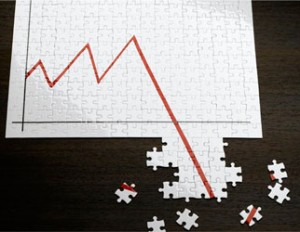How to survive the market mayhem
Take advantage of the stock market drops and don't panic
Advertisement
Take advantage of the stock market drops and don't panic
 These are fearful times. The U.S. credit downgrade and the European debt crisis have divided investors into three camps: in the first investors are selling their stocks, in the second they’re hunting for safe money havens, and in the third they’re holding their breath, hoping to wait out the storm. What should you do?
First consider this—trying to time the market with a strategic exit and re-entry strategy is a pretty poor choice. If there were such a thing as a hall of fame for market timers, it would have fewer members than a country club on Everest’s summit.
Young people should celebrate if the markets fall. The best time to add regular long-term contributions to the stock market is when there’s blood in the streets. If you can ignore the media, and plough regular deposits into the world’s stock markets, you’ll likely grow very wealthy over time. Patient young investors who ignored the plentiful doomsayers between 1965 and 1982 (when the markets barely budged) were ultimately rewarded when the world’s stock markets surged: the U.S. market gained nearly 1,500% during the period from 1982 to 2000.
For investors in their 30s, 40s and 50s, stock market drops are like bad haircuts. From time to time, they’re inevitable. History suggests that the stock market (like cut hair) will always grow back after a trimming. Remain calm. If you continue investing at lower price levels, chances are you will be laying a strong foundation for future wealth.
Your portfolio should already have a component of Canadian short-term government bonds. If it doesn’t, then make sure that’s your first priority. With bonds, your portfolio will be less volatile and you’ll be able to take advantage of stock market drops by rebalancing. It might take years before the juicy rewards of such rebalancing become evident, so be patient.
Most retirees should have limited exposure to the stock market, so if you’re a retiree with a high percentage of your portfolio in equities, you may want to sell some of your stocks and add more Canadian bonds. Simply keep an allocation of bonds that’s somewhat close to your age. A retired 70-year-old, for example, may want 30% of her portfolio in stocks and 70% in bonds or a low cost annuity.
The key is that rather than speculating where the markets may go, ensure that your portfolio’s allocation is responsible—today.
These are fearful times. The U.S. credit downgrade and the European debt crisis have divided investors into three camps: in the first investors are selling their stocks, in the second they’re hunting for safe money havens, and in the third they’re holding their breath, hoping to wait out the storm. What should you do?
First consider this—trying to time the market with a strategic exit and re-entry strategy is a pretty poor choice. If there were such a thing as a hall of fame for market timers, it would have fewer members than a country club on Everest’s summit.
Young people should celebrate if the markets fall. The best time to add regular long-term contributions to the stock market is when there’s blood in the streets. If you can ignore the media, and plough regular deposits into the world’s stock markets, you’ll likely grow very wealthy over time. Patient young investors who ignored the plentiful doomsayers between 1965 and 1982 (when the markets barely budged) were ultimately rewarded when the world’s stock markets surged: the U.S. market gained nearly 1,500% during the period from 1982 to 2000.
For investors in their 30s, 40s and 50s, stock market drops are like bad haircuts. From time to time, they’re inevitable. History suggests that the stock market (like cut hair) will always grow back after a trimming. Remain calm. If you continue investing at lower price levels, chances are you will be laying a strong foundation for future wealth.
Your portfolio should already have a component of Canadian short-term government bonds. If it doesn’t, then make sure that’s your first priority. With bonds, your portfolio will be less volatile and you’ll be able to take advantage of stock market drops by rebalancing. It might take years before the juicy rewards of such rebalancing become evident, so be patient.
Most retirees should have limited exposure to the stock market, so if you’re a retiree with a high percentage of your portfolio in equities, you may want to sell some of your stocks and add more Canadian bonds. Simply keep an allocation of bonds that’s somewhat close to your age. A retired 70-year-old, for example, may want 30% of her portfolio in stocks and 70% in bonds or a low cost annuity.
The key is that rather than speculating where the markets may go, ensure that your portfolio’s allocation is responsible—today.
Share this article Share on Facebook Share on Twitter Share on Linkedin Share on Reddit Share on Email